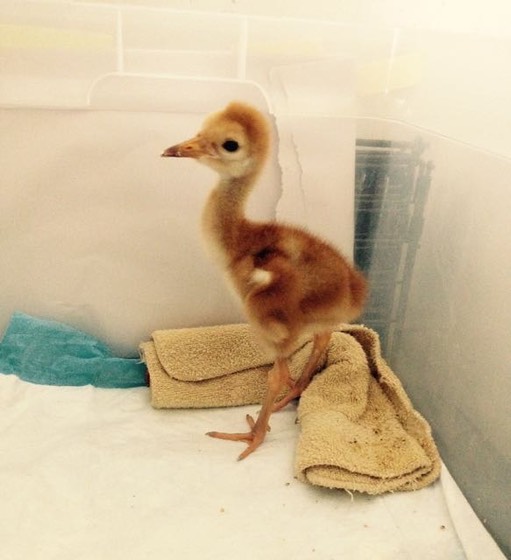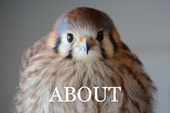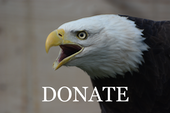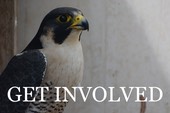Off to Vet School
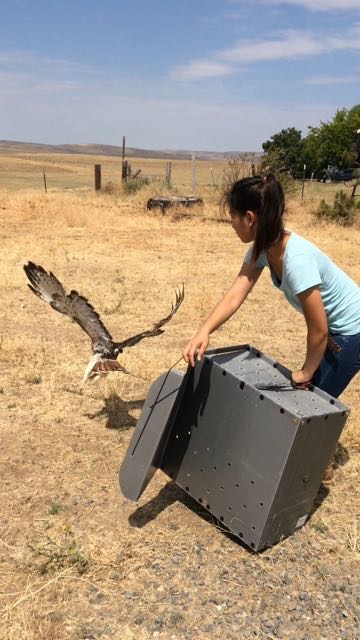
We said goodby to intern Jean this past week and wish her the very best as she begins her first year of veterinary school in the fall. Thank you for all your hard work Jean!
Welcome Chelsea
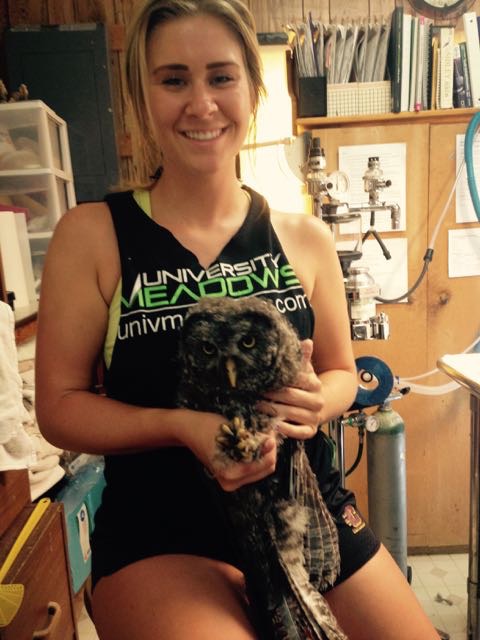
The same day that Jean flew home to Alaska, Chelsea arrived from Michigan. Although business has slowed from the crazy pace of a couple weeks ago, we still had 19 admissions, including 14 raptors. This Great Gray Owl fledgling arrived Sunday afternoon from Joseph, OR. It has a dislocated hip and is displaying some strange neurological symptoms.
Note: 3 hours after the initial exam the owl’s neurological symptoms intensified and inspite of our greatest efforts he died. We will send tissue samples to OSU Diagnostic Lab in an atttempt to determine the cause of death.
Osprey and Baling Twine
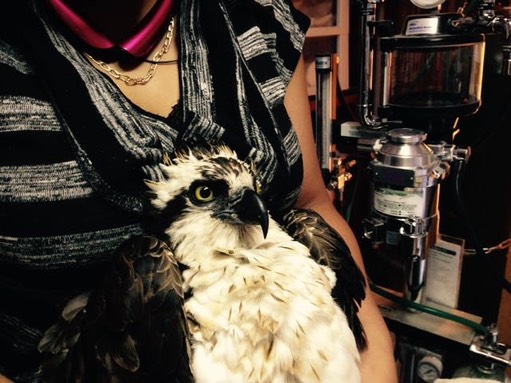
Every year we admit Osprey tangled in baling twine. The first one of the summer arrived this past week. She is a large female with a brood patch, indicating she has offspring to support. She was found hanging by one leg under a nest platform in Enterprise. ODFW transported her to La Grande and the Tribal Bus Service brought her to Pendleton. Initially her lower left leg and foot were swollen and she could not move her toes. Virtually all of the swelling is gone and she is now able to stand and use her foot normally. She is still unable to fly.
A Very Sad Ending
The decision to euthanize an animal is never made casually. After consulting with the International Crane Foundation and a wildlife biologist at Ladd Marsh where a large number of cranes stage before migration, the decision was made to euthanize the Sandhill Crane colt from Malheur Wildife Refuge.
All of the Sandhill Cranes have fledged at Ladd Marsh which means they are about two months older than the baby from Malheur. Perhaps his parents failed at there first attempt to nest and renested, or perhaps they were inexperienced adults and nested very late. Whatever the reason, if the colt had survived long enough to fledge, he probably wouldn’t have been strong enough to successfully migrate.
When raised in captivity, cranes need to be exercised a minimum of eight hours a day by a surrogate mother (a human dressed in a crane costume) in order to keep their rapidly growing legs strong and healthy. They also learn a variety of behaviors from their mothers, including what foods to eat and how to recognize and avoid danger. We do not have the resources to accomplish such a labor intensive task. In the unlikely event that the crane could have been successfully raised, it would need to be placed in a zoo or other educational facility. According to the International Crane Foundation Sandhill Cranes are very difficult to place because they are not as charismatic as their Whooping Crane cousiins.
Because he was such a late baby, the odds of the Sandhill Crane colt being able to successfully migrate were very slim even if he were raised by his parents. The people who picked him up and took him to the Visitor’s Center at Malheur Wildlife Refuge removed any possibility of success.
